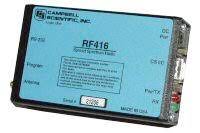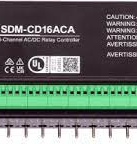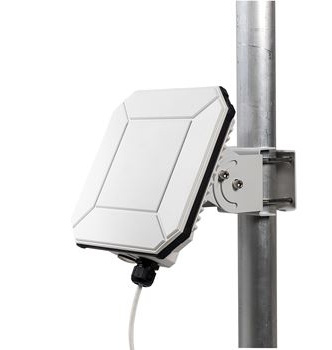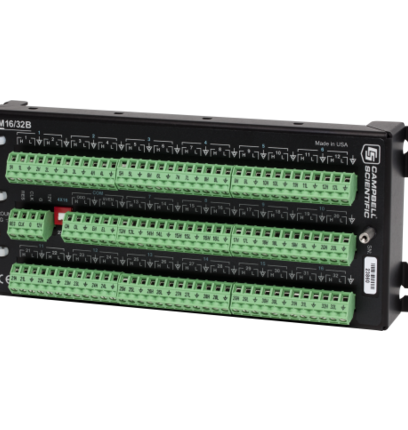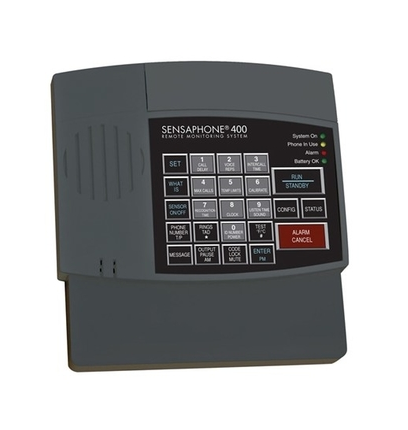RF416 2.4 GHz Spread-Spectrum Radio
Spread-spectrum radios spread the normally narrowband information signal over a relatively wide band of frequencies. This allows the communications to be highly immune to noise and interference from RF sources such as pagers, cellular phones, and multipath. The RF416 reduces susceptibility to RF interference from other spread-spectrum devices by providing user-selectable frequency-hopping patterns.
- The RF416 spread-spectrum radio can be used for general purpose wireless data communication and supports point-to-point and point-to-multipoint data logger communication.
- It can serve as a field modem/radio while connected to the data logger or as a base station modem/radio when connected to a computer.
- The RF416 has a frequency range of 2.450 to 2.482 GHz, which is used in many countries worldwide.
- It can communicate with other RF416 radios, and RF432 radios, as well as the internal radio in CR216(X) dataloggers and AVW216 interfaces.
Benefits and Features
- Long range, wireless communications between devices
- Hassle-free operation in many countries where license-free operation is allowed
- Low average power consumption
- Optimized for Campbell Scientific PakBus networking
- Improved RF efficiency when using PakBus protocol compared to other third-party solutions
- Low-cost, stand-alone operation when a dedicated PakBus RF repeater is needed
- Frequency hops over 25 channels avoid interference from other spread-spectrum radios
| Frequency | 2.450 to 2.482 GHz |
|---|---|
| Radio Type | Frequency Hopping Spread Spectrum (FHSS) |
| Country Used In | Any country where 2.4 GHz Wi-Fi communications are allowed |
| Transmission Distance | 0.4 km (0.25 mi) with omnidirectional antenna (outdoors); up to 0.8 km (0.5 mi) with higher-gain directional antennas at ideal conditions |
| RS-232 Baud Rate | 38.4k, 19.2k, 9600, 4800, or 1200 bps |
| Channel Capacity | 65,000 Network Identifiers share 25 hop channels. |
| Frequency Hopping Patterns | 6 different selectable patterns |
| Frequency Control | Direct FM |
| Receiver Sensitivity | -104 dBm at 10-4 bit error rate (Campbell Scientific protocols will issue retries wherever a bit error occurs.) |
| Interference Rejection | 70 dB (at pager and cellular phone frequencies) |
| Power Output | 50 mW (nominal) |
| Data Rate | 10 kbps |
| Antenna Connector | Reverse Polarity SMA (RPSMA) |
| RS-232 Connector | 9-pin D female (4 wire: Tx, Rx, CTS, GND) |
| CS I/O Connector | 9-pin D male |
| FCC ID | OUR-24XSTREAM |
| Power | 9 to 16 Vdc |
| Operating Temperature Range | -25° to +50°C |
| LEDs | Power on, TX, RX, diagnostics |
| Power Connector | Barrel plug, center positive 12 V (used to connect the 14291 Field Power Cable) |
| Average Current Drain |
|
| Communication Ports |
|
| Dimensions | 11.4 x 7.0 x 2.9 cm (4.5 x 2.8 x 1.1 in.) |
| Weight | 227 g (8 oz) |
